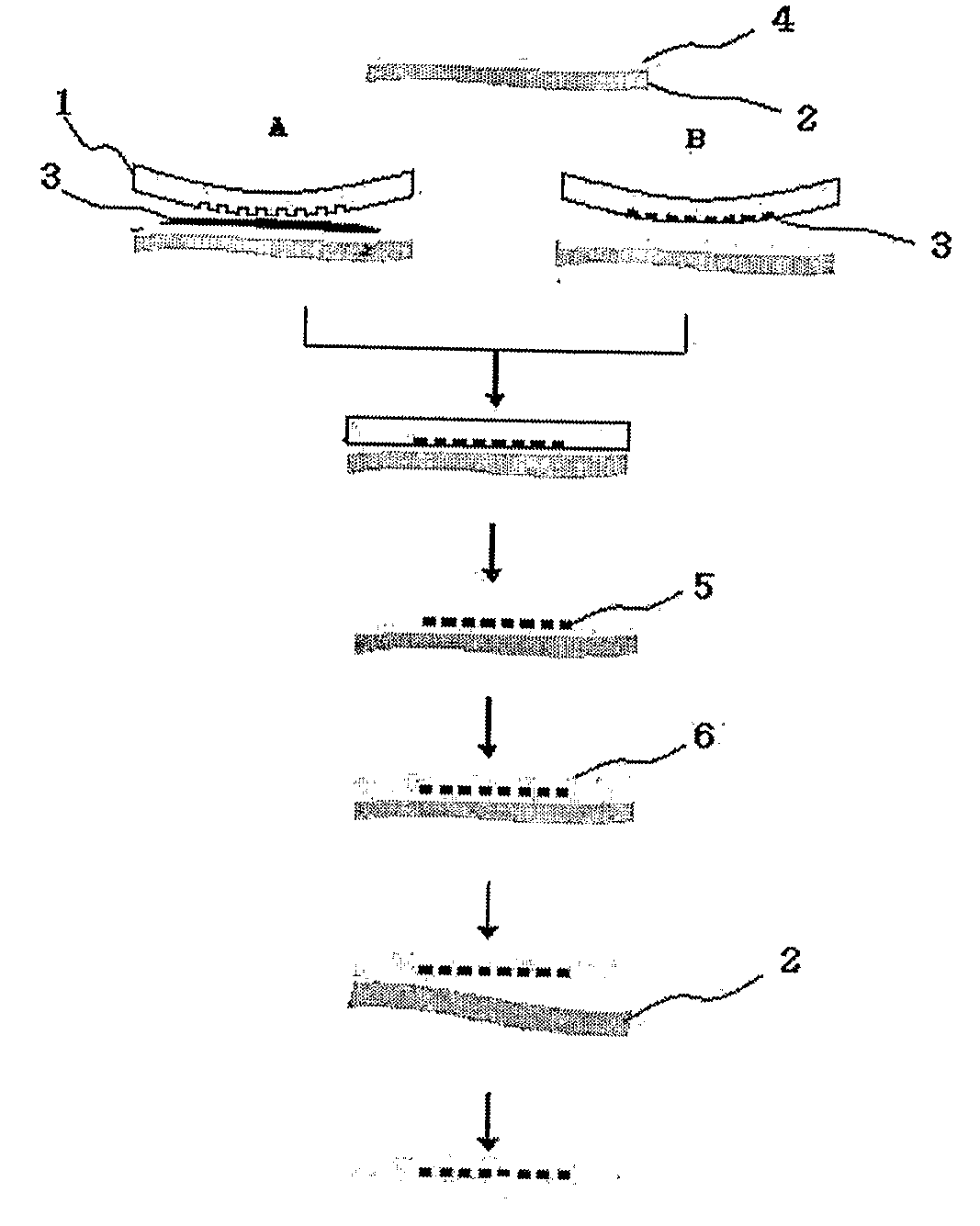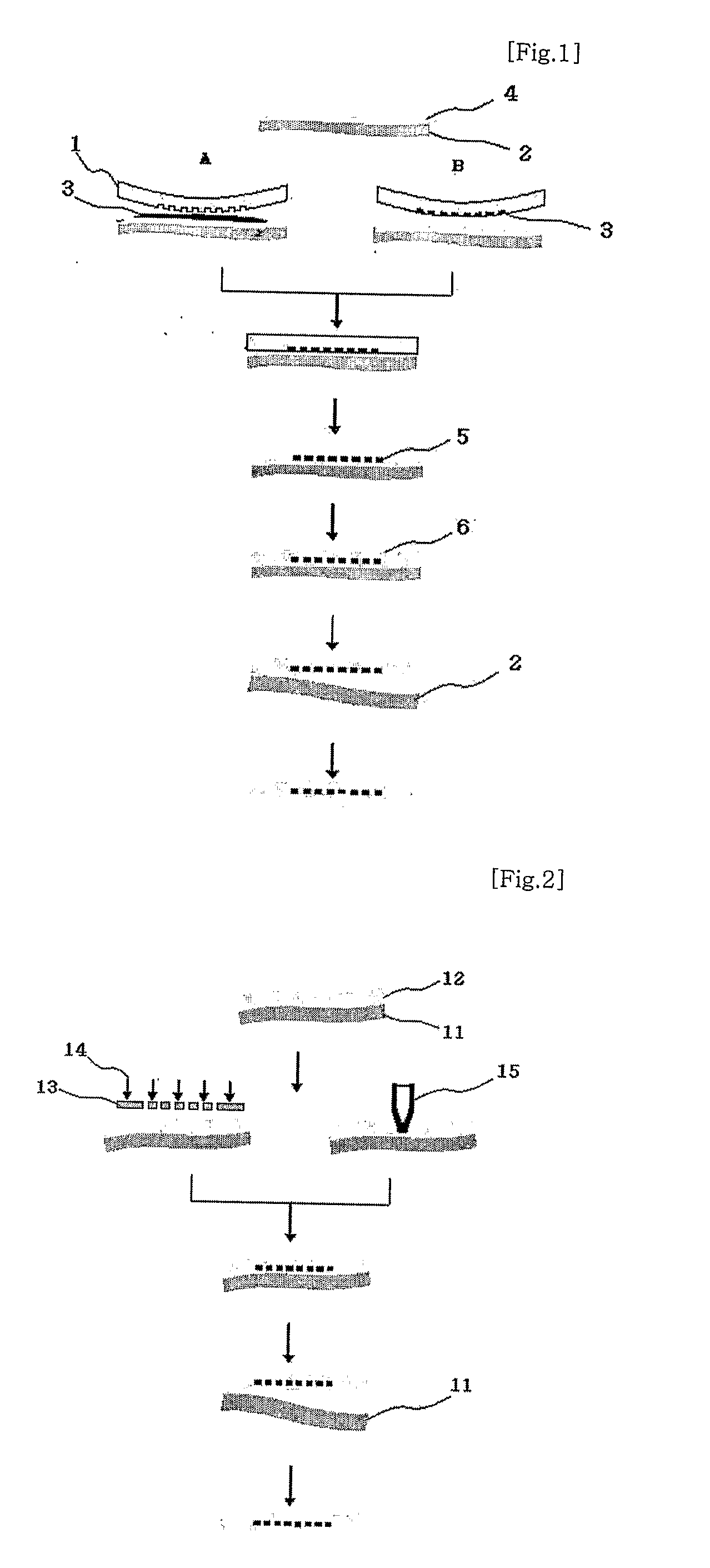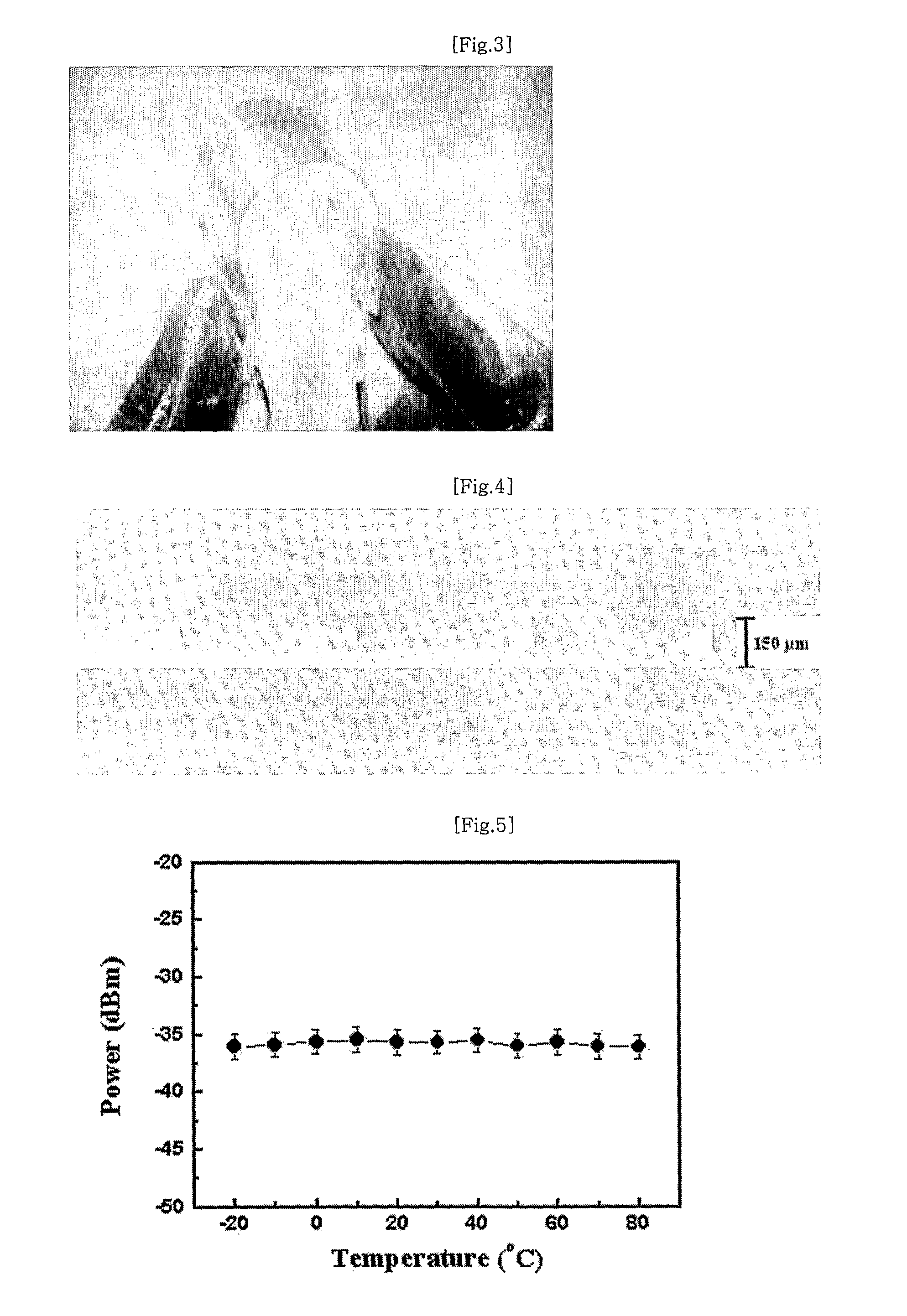Flexible Film Optical Waveguide Using Organic-Inorganic Hybrid Material and Fabrication Method Thereof
a flexible film and hybrid material technology, applied in the field of can solve the problems of limited formation of optical waveguides, high fabrication costs, and difficult fabrication of conventional polymer flexible film optical waveguides on a mass production basis, and achieve low waveguide loss, low bending loss, and high stability
- Summary
- Abstract
- Description
- Claims
- Application Information
AI Technical Summary
Benefits of technology
Problems solved by technology
Method used
Image
Examples
example 1
[0063]As a core resin, 13.78 g of 3-methacryloxypropyltrimethoxysilane (Aldrich) and 12.00 g of diphenylsilanediol (Fluka) were mixed together, added with 0.01 g of sodium hydroxide as a catalyst for the acceleration of a siloxane reaction, and then stirred at 80° C. for 6 hr, to obtain a methacryl-phenyl-silica organic-inorganic hybrid material. Separately, as a cladding resin, 13.78 g of 3-methacryloxypropyltrimethoxysilane (Aldrich), 12.00 g of diphenylsilanediol (Fluka), and 5.20 g of heptadecylfluorodecyltrimethoxysilane (Toshiba) were mixed together, added with 0.01 g of sodium hydroxide as a catalyst for the acceleration of a siloxane forming reaction, and then stirred at 80° C. for 6 hr, to obtain a methacrylphenyl-fluorocarbon-silica hybrid material.
[0064]To each of the core resin and the cladding resin, BDK as an organic monomer, which is a heat- and photo-sensitive initiator for polymerization, was added in an amount of 1 mol % based on the total amount of alkoxide, and t...
experimental example 1
Measurement of Bending Loss
[0065]FIG. 3 illustrates the result of a bending experiment conducted on the flexible film optical waveguide fabricated in Example 1. For the experiment, a 180° C. bend was applied, and bending loss was measured while gradually decreasing the bending radius. When the difference in refractive index between the core and the cladding layer of the flexible film optical waveguide was 2%, bending loss before and after the 180° C. bending, varying with the bending radius, were measured. The results are given in Table 1 below. As is apparent from Table 1, it could be seen that no bending loss was observed even when the bending radius was decreased to 2 mm.
TABLE 1Bending Radius (mm)Bending Loss (dB)200150100503020
experimental example 2
Measurement of Waveguide Loss
[0066]The waveguide loss of the flexible film optical waveguide of Example 1 varying with the length thereof was measured. For the experiment, the flexible film optical waveguide was cut to different lengths and finely polished. The optical photograph of the section thereof is shown in FIG. 4. The measured optical waveguide loss, depending on the variation in length, was confirmed to be about 0.25 dB / cm or less.
PUM
| Property | Measurement | Unit |
|---|---|---|
| flexible | aaaaa | aaaaa |
| refractive index | aaaaa | aaaaa |
| network structure | aaaaa | aaaaa |
Abstract
Description
Claims
Application Information
 Login to View More
Login to View More - R&D
- Intellectual Property
- Life Sciences
- Materials
- Tech Scout
- Unparalleled Data Quality
- Higher Quality Content
- 60% Fewer Hallucinations
Browse by: Latest US Patents, China's latest patents, Technical Efficacy Thesaurus, Application Domain, Technology Topic, Popular Technical Reports.
© 2025 PatSnap. All rights reserved.Legal|Privacy policy|Modern Slavery Act Transparency Statement|Sitemap|About US| Contact US: help@patsnap.com



